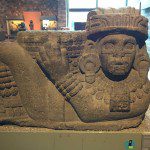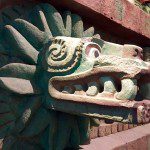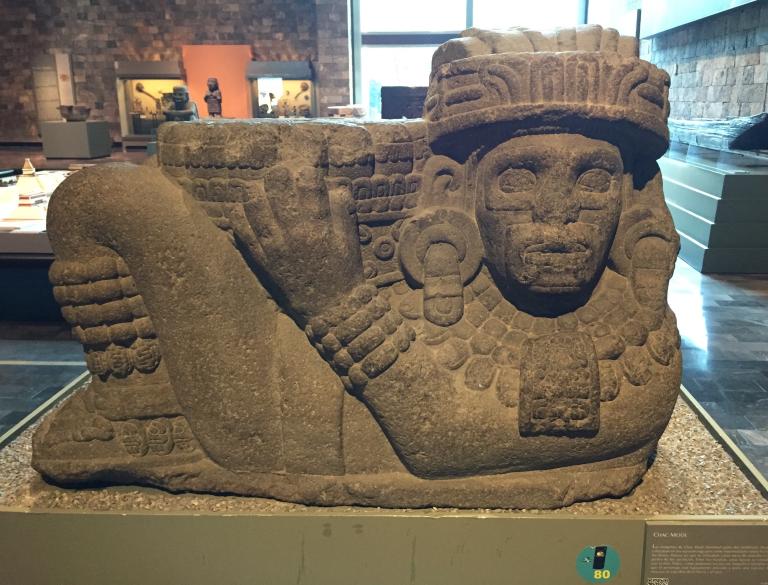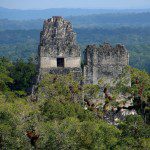
Part 2 of my series on Mexico City:
Today the remains of the Templo Mayor, the main religious center for the Aztecs, lie next to Mexico’s largest cathedral (in Mexico, as in many other places around the world, religious landmarks from different eras are often layered upon each other). The sprawling archeological site covers several city blocks in Mexico City, a hodgepodge of stone walls, plazas, and ruins.
The Templo Mayor was once the heart of Tenochtitlan, the Aztec capital. On top of its main pyramid were two temples, one to the god of rain and one to the god of war—-the very spot that I knew had been dedicated with 80,000 human sacrifices (see The Aztecs: The Worst Neighbors in the World). It was hard to reconcile the peaceful scene before me with the carnage that had once taken place here.
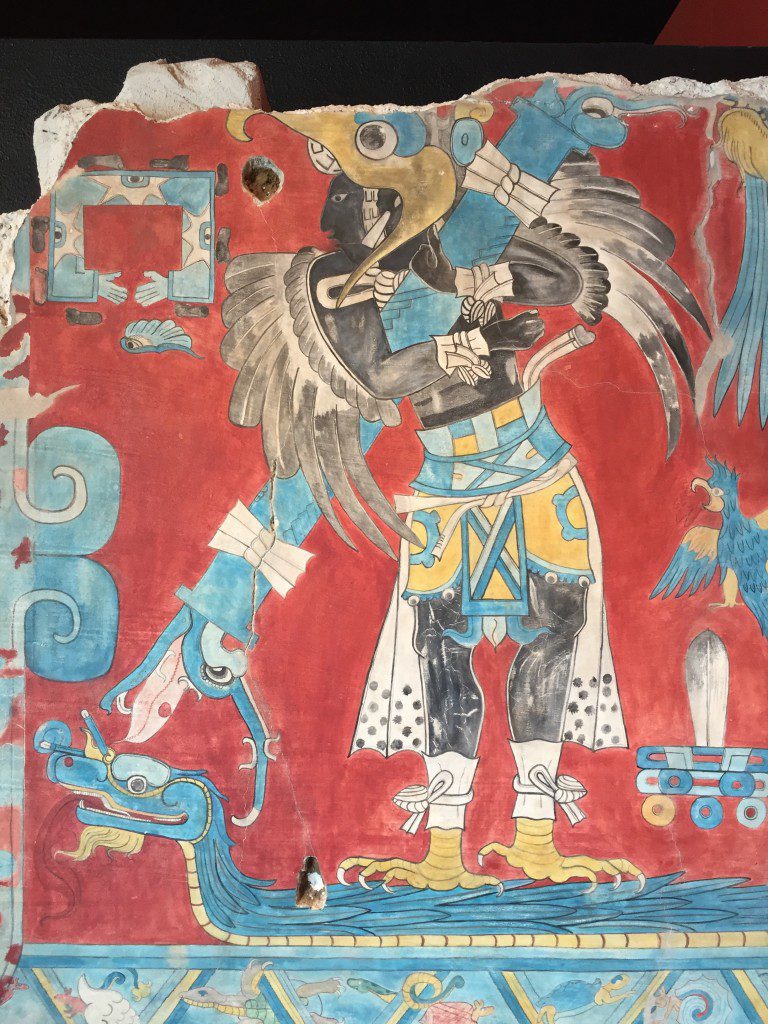
As I ventured further into the ruins, one place in particular fascinated me: the House of the Eagles, which was a sacred precinct for the elite members of Aztec society. It was here that the statue of Mictlantecuhtli, the god of death that I encountered in the museum, had been found. A marker near the ruin described the rituals that had taken place here. Traces of blood are still detectible on the stones even after centuries, it said, words that triggered a shiver of distaste in me.
I pride myself on being able to appreciate religious expression in many forms, but the Aztecs stretched my tolerance to its limits. Just how much of a true-believer do you have to be to extract a beating heart from a victim and hold it up to your god? (I know, I know–religious history, alas, is full of people behaving badly, but this is a particularly terrible example of this tendency.)
If much of our contemporary society tries to ignore death altogether, the Aztecs had the opposite problem: for them, death was strangely, inexplicably seductive.
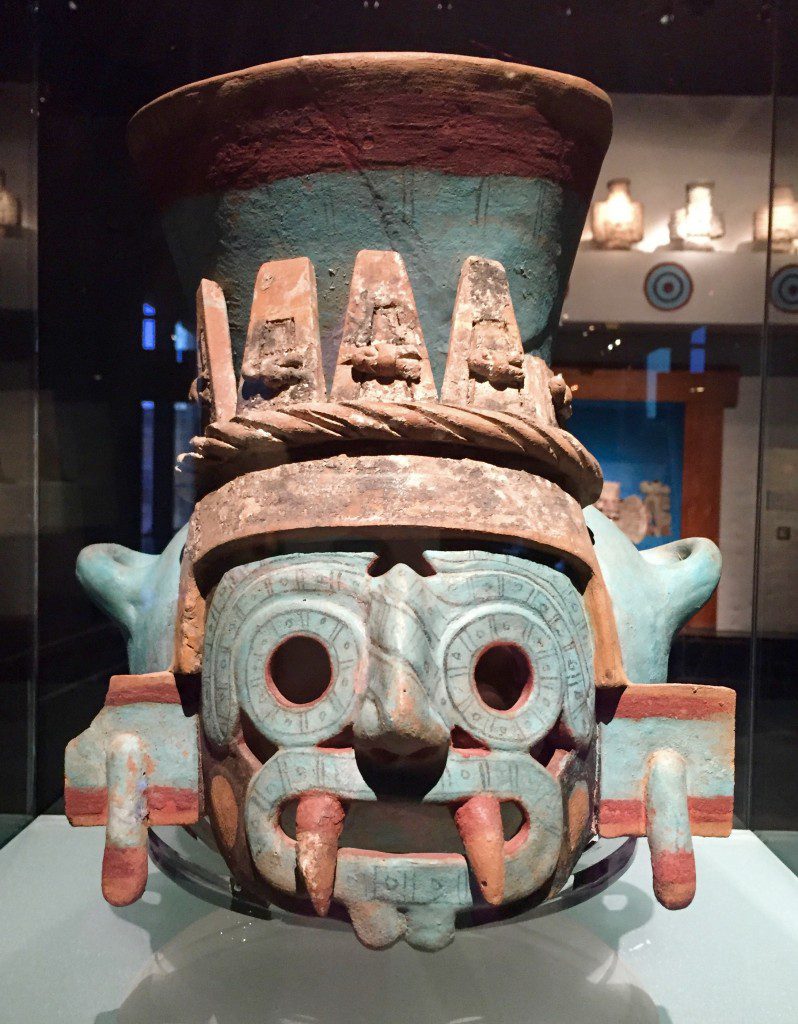
In the Templo Mayor Museum, I learned that for the Aztecs, people’s fate after death was determined not on the basis of how they lived, but rather on how they died. Most souls ended up in Mictlan, the nine-layer underworld, a dark, damp, and miserable place ruled over by Mictlantecuhtli, the god with the dangling liver, and his consort, the equally unattractive Mictlancihuatl.
The one good thing about being in Mictlan was that once a year you could return to the world of the living during August, when ceremonies honoring the dead were held, with dancing, feasting, and dressing up in costumes.
Some people were fortunate enough to escape Mictlan entirely, including warriors who were killed in battle, women who died during childbirth, and captives who were sacrificed in a religious ritual (perhaps this belief made it a little easier for them as they walked up the steps of those temples). Instead these lucky souls ended up in Tlalocan, a paradise of eternal spring.
The Aztecs, along with other Mesoamerican cultures, even incorporated death into their sporting events. Throughout the region, a game was played on an I-shaped court with sloping sides. The goal was to put a heavy ball through a ring, a difficult task since players could use only their hips, elbows, head, and knees. The game re-enacted part of the sacred mythology of the Aztecs, recalling the perpetual struggle between good and evil, light and darkness, and the god Quetzalcoatl and his rival brother Tezcatlipoca. And here’s the quintessentially Aztec kicker: the losers were killed.
Say what you will about the Aztecs, they did face death with a certain joie de vivre. To them it was an essential part of the inherent duality of the universe: male and female, hot and cold, day and night. And life and death, the most significant duality of all.
When Hernando Cortez led the final decisive battle against the Aztecs in 1521, he and his soldiers were joined by more than 200,000 natives who were eager to get rid of their troublesome neighbors. And once the Aztecs were defeated, the Catholic missionaries arrived.
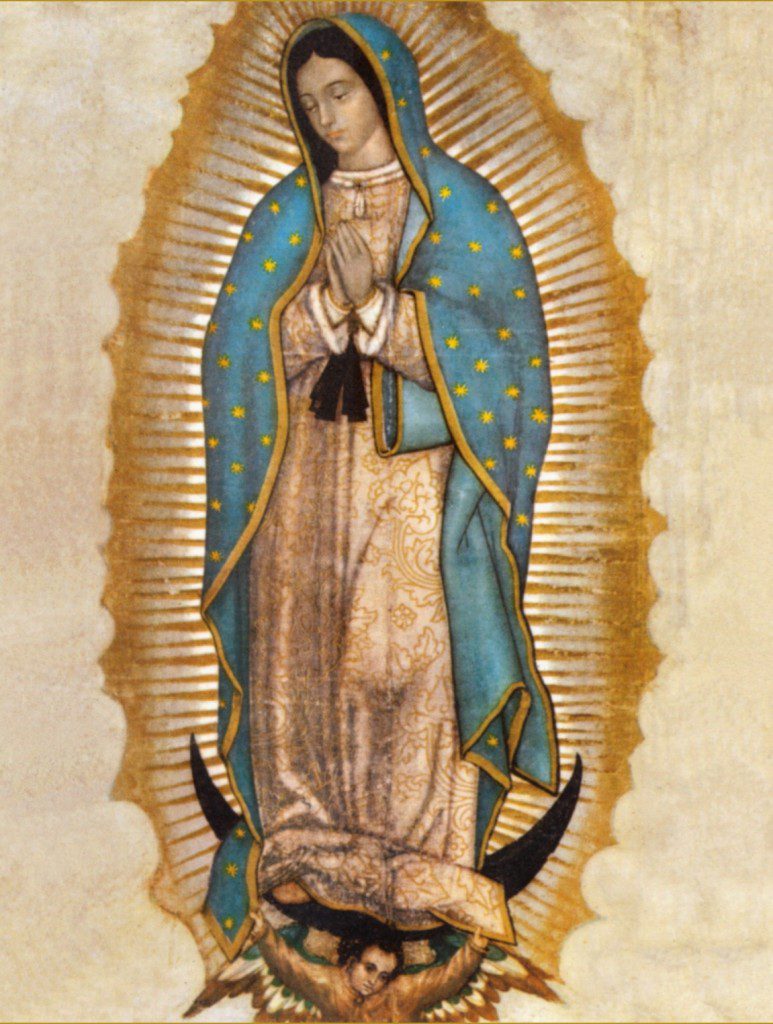
Their work was made easier by the fact that Christianity also had a sense for the sacredness of blood (though for Christians, it was the blood of Jesus on the cross, of course, as well as the wine-turned-to-blood of the Eucharist).
It also helped that there were similarities between Jesus and the plumed serpent god Quetzalcoatl, another wise and kindly deity who was going to return to earth at some at some unspecified point in the future.
Through the next centuries, the two traditions intertwined. Many of the Christian saints became linked with Aztec and Mayan gods: the rain god Tlaloc was worshipped in the form of St. John the Baptist, for example, another religious figure associated with water.
And when a peasant named Juan Diego had a vision on a hill near a shrine dedicated to the goddess Tonantzin, the brown-skinned woman he saw became known as Our Lady of Guadalupe. The vision confirmed the fact that the Virgin Mary loved the native peoples of Mexico as much as the Spaniards (more on Our Lady of Guadalupe in a later post, of course!).
Given all of this, it’s not surprising that when the newly converted Aztecs wanted to honor their dead, their traditional August celebration was moved to the Christian holidays of All Saints and All Souls Days in November. Elements of these earlier rituals were incorporated into the Catholic celebration, including music, dancing, offerings of food to the dead, the ubiquitous images of skulls and skeletons, and also marigolds, which in Spanish are known as cempasúchil, the flowers of the dead.
Next Post: Mexico’s Teotihuacan, One of the World’s Greatest Archeological Sites
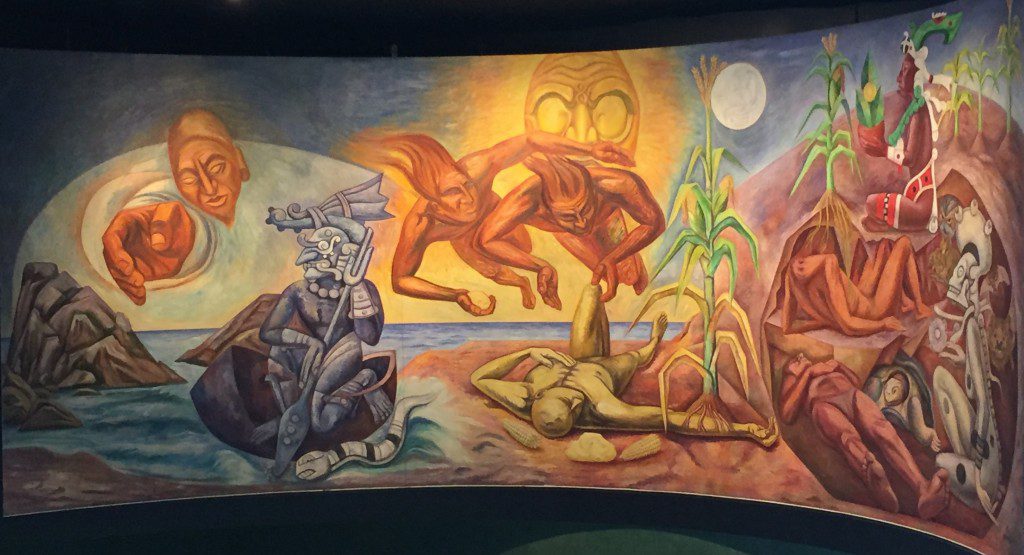
Stay in touch! Like Holy Rover on Facebook:

